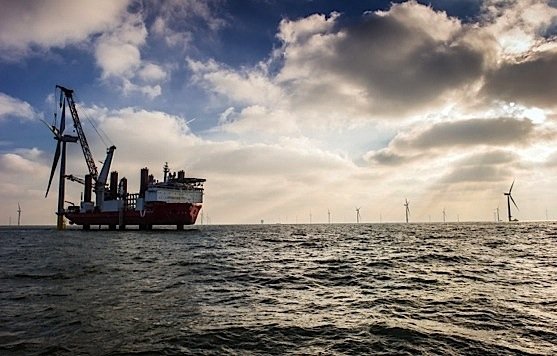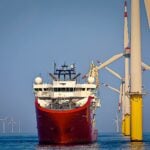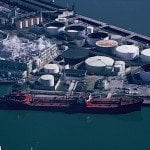The German energy giant Siemens is a global leader in offshore wind energy, having installed more than 1,200 turbines to date, with another 1,200 or so on order. One of the benefits of being a leader is the acquisition of knowledge through experience: Siemens can install a 250-ton turbine with rotors 120 meters long in just 14 hours, a feat the company has accomplished by simplifying both the manufacture and the installation processes. They are also building bigger turbines: Siemens has a six-megawatt model with rotors of 154 meters.

Now a study commissioned by the German Offshore Wind Energy Foundation, along with Siemens and other companies in the industry, has concluded that the cost of electricity from offshore wind can be reduced by about one-third over the next decade if development continues consistently. At present the cost of electricity produced by offshore wind is approximately three times the cost of conventionally produced power, so reducing costs is essential if widespread adoption is to happen.
“The identified cost reduction potentials are based on the assumption that offshore wind power will be continuously developed and reach a capacity of nine Gigawatt or more by the year 2023. This is the way to gain project experience, to promote technological innovation and to significantly decrease costs,” said Jens Eckhoff, president of Offshore-Windenergie in a statement. “Offshore wind power has a substantial cost reduction potential. However, the industry can only exploit this potential if there are reliable framework conditions to achieve significant market volumes.”
In analyzing the projected cost development of electricity generated from offshore wind, the study concluded that costs could be reduced by about 31 per cent, assuming stable market development, reaching at least 9 Gigawatt installed capacity in Germany by 2023. In a second, best-case scenario, where development progresses to 14GW, the cost reduction would be closer to 39 per cent.
Today, according to Siemens, the European grid has about 3.3 GW of offshore wind power. This is comparable to what a single, large nuclear power station would produce.
According to the authors of the study, continuous technological development is the main driver of the cost reduction. Larger turbines yield “substantially” more power, while costs go down. Construction and operation costs, as well as financing costs, can also be reduced. More powerful ships and improved infrastructure also contribute to the overall improvement in performance and cost.
Siemens already has a large training centre operating in the northern city of Bremen where about 2,500 workers are being trained each year to work on the giant turbines at sea. A manager there told the New York Times that they have to keep hiring because the wind business is getting “bigger and bigger.”
Another major wind developer in Germany, Windreich GmbH, is to deploy 130 5-megawatt turbines, supplied by the French manufacturer AREVA, in the Baltic Sea. These turbines will increase performance by 10 per cent, the company said.
Denmark is the largest user of offshore wind, and the state utility, DONG, has installed 2 GW in Denmark, the UK and Germany. It intends to increase that amount to 6.5 GW by 2020. The head of DONG said that 50 per cent of future investments will go into offshore wind. Denmark’s Vestas is the second leading supplier of wind turbines, after Germany’s Siemens.
One of the largest winds farm in the world is off the coast of Kent in England. The London Array produces 630 MW of electricity, using 175 Siemens turbines spread over 100 square kilometres. This amount of power is enough for about 500,000 homes in the UK per year.
In the US, the first offshore wind farm could end up being not in either of the oceans, but in Lake Erie. A group in Ohio, the Lake Erie Energy Development Corporation (LEEDCo) is working to build a wind farm that could supply 8,500 homes with power for a year.


































